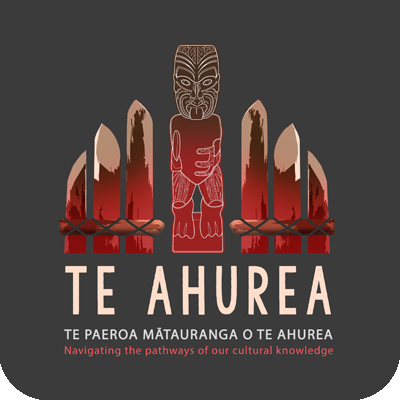HISTORICAL KERIKERI
KORORIPO PĀ
The name by which we know the Pā – Kororipo – was in use from the earliest years of the Mission. It means “swirling waters”.
According to oral tradition, Kororipo Pā was occupied by the tribe, Ngāti Awa, and by the Wahineiti and Ngāti Miru people, until they were displaced in the 1770’s by the new alliances of Ngāpuhi (northern tribes) and, in particular, Ngāti Rēhia.
The Pā was located strategically to command the junction of the Wairoa and Kerikeri rivers. Kororipo Pā controlled the major route to the sea from inland Waimate, a heartland of Ngāpuhi in the Bay of Islands.
This was the meeting place where weighty matters were discussed and reached. This was also the place that Ngāpuhi assembled before going to battle.
During the years of Hongi Hika’s residence at Kerikeri (1819 -1826) it was associated with the launching of great Taua – war parties and acted as a fortress protecting the area from attack.
By the early nineteenth century, the district from Hokianga in the west to Whangaroa, encompassing Kaikohe and ultimately extending to Motu Kōkako – Cape Brett, was an integrated defensive area of affiliated northern tribes associated with Ngāpuhi, known as the Northern Alliance. From a military perspective Kororipo Pā, though small, had an impressive defensive position sited to capitalize on a peninsular shape of land, steep embankments and turbulent waters. In addition, it originally comprised a complex network of pits, palisades and carved posts.
The placement of Kororipo Pā was protected from landward threats by Ōkuretope Pā and from sea by the Pā at Rangihoua and Te Tii. To provide early warning of potential aggression, Ngāpuhi had developed a sophisticated communications network, whereby scouts were deployed on strategic headlands and at observation posts. Fire and smoke, combined with the blowing of the pūtatara – conch and beating of pāho – drums, gave an immediate alert, while fast-running messengers carried detailed reports on the nature of threat.
Prior to setting off on a campaign, Hongi Hika would call his allies to action. They would gather at Kororipo Pā to discuss battle strategies. When the war party was ready, the flotilla would commence its journey stopping at Cape Brett and Whangarei as they did in September 1821 for final reinforcements and preparations before wrecking devastation on Tāmaki, Waikato, Rotorua, Tauranga and beyond. Once the campaigning had been concluded, the war party would return back to Kororipo Pā, where the warriors would announce their victorious return with Haka (war dance) and Waiata (song).
KĀINGA (VILLAGE)
A short distance from the Kerikeri Basin was a sizable Kāinga (Village). The population of the Kāinga fluctuated seasonally, but it is evident that there were Pātaka (food-storage platforms) and Whare Whakairo (ornamented houses) when the chiefs Tāreha of Ngāti Rēhia, Rewa of Ngai Tāwake and Hongi Hika of Ngāti Tautahi stayed there in the 1820’s.
The main Kāinga was located by the old Pā because of the good gardening and fishing. The chiefs had other homes (or small kainga) at Kerikeri, notably Hongi. Rewa and Hongi also had houses at Waimate and Tāreha lived at Te Tii at the head of Te Puna Inlet.
Gravel (kirikiri) was dug from the river to increase the yield of kūmara (sweet potato) crops. This common practice of gravel cultivation, or lithic mulching, warmed the soil and may have given the place its name (often written as Kidde kidee).
The promontory situated on the northern bank of Kerikeri River, beside the falls and diagonally opposite Kororipo Pā was a burial place for Āriki (high – born chiefs). This double pointed promontory is where Te Ahurea is located.
SIGNIFICANT SITES
Other associated names with Kororipo point to its Mana (power and authority) and Tapu (sacredness), and consequently its significance in northern Māori political, economic and military history.
TE WAHA O TE RIRI
Te Waha o te Riri is a Ngāti Rēhia Pā located in Te Puna, Te Tii Mangonui and is translated as “The mouth of Anger” or “The Inlet of War”.
This was also used in reference as the first of a number of coastal staging posts for the departure of Ngāpuhi fighters and expeditions to the south.
TE AWA O NGĀ RANGATIRA
This is associated with Ngāti Rēhia of Te Tii and means “The Deliberating Place of Chiefs” referring to the river and Pā as an assembly place or venue for councils of tribal leaders, where generations had gathered.
Such venues were referred to as “Ngāpuhi Wānanga” rendered as places of learning and discourse on matters of significance for Ngāpuhi.
It is highly likely that Kororipo was one such place, a wānanga of the Rangatira (chiefs) and Tohunga (experts in their field).
TE KERIKERI
The river that discharged itself into the cove was commonly called Te Kerikeri.
Kerikeri means repetitive digging associated with gardening.
Many wrote the name as Kidee Kidee (Kirikiri), meaning river gravel, which Hare Te Heihei, grandson of Tāreha, mentioned was deliberately brought up from the river and used on kūmara gardens.

